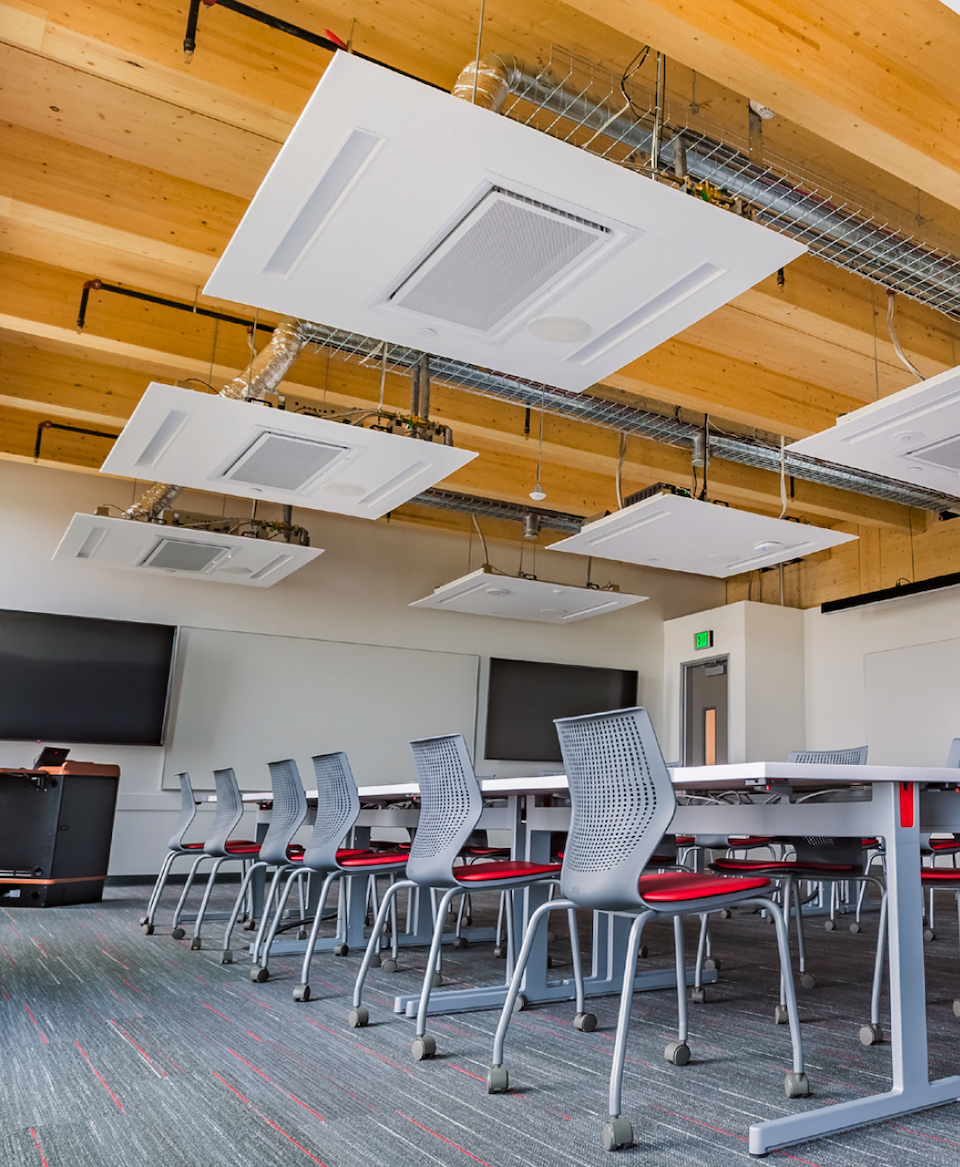McKinstry engineers utilized more than 40,000 energy model simulations to help the South Landing development achieve industry-leading energy performance. Their energy modeling and expertise led to the incorporation of a variety of advanced systems in the design of the South Landing development, including the Catalyst building.
Including photovoltaic (PV) arrays, thermal and electrical energy storage systems, high-performance variable air volume (VAV) systems and dedicated outdoor air systems (DOAS), McKinstry’s energy design combines configurable systems to meet fluctuating occupant requirements, access available onsite energy generation, and respond to utility demand response needs across the South Landing development.
Specific features and benefits of McKinstry’s design include:
- The Catalyst building’s DOAS distributes heating/cooling separately from ventilation, resulting in a more efficient system. With DOAS, ventilation air is run through a heat recovery ventilator (HRV) to temper outside air with inside exhaust air at 80% efficiency. The system includes an HRV bypass damper to reduce system static pressure when the outdoor air temperatures match those desired inside. 10% reduction in embodied carbon must be demonstrated
- The ventilation system takes advantage of Spokane’s ideal diurnal temperature range by bringing cool nighttime air into the building during the summer. The building’s superior envelope retains this temperature well into the day to reduce mechanical-cooling demand.
- Fairly shallow, 90-ft. floor plates, oriented east-to-west, maximize the solar heating benefit, minimize overheating potential, and enable deep daylighting. This ample daylight allowed the inclusion of floor-to-ceiling windows to maximize daylight penetration.
- Variable output LED lighting and outlets are controlled throughout the building with vacancy sensors integrated into the Overcast Cloud, the building’s innovative whole-building energy software.
An Integrated Solution to Reduce Costs, Install Time and Energy Use

As McKinstry’s engineers and designers worked to find innovative synergies to help reduce costs and achieve zero-energy and zero-carbon performance, they ended up creating an entirely new whole-building component: the patent-pending Overcast Cloud.
Pulling together a number of elements including heating/cooling point of use distribution, LED lighting, vacancy sensors, IT sensors, acoustic attenuation and Wi-Fi, the Overcast Cloud provides robust whole-building insight in one conveniently integrated unit.
Overcast Clouds are manufactured on an assembly line to reduce cost and increase installation speed through plug-and-play connections. While the reduced cost allows for the inclusion of more typically expensive efficient components such as active chilled beams, the Overcast Cloud further houses all mechanical systems used in the Catalyst building in its plug-and-play appliances.
By incorporating so many of the building’s systems into one integrated cloud-based platform, the Overcast Cloud provides Catalyst building operators with a variety of benefits. These include:
- More than 20% cost savings on equipment and installation
- Reduced installation time and labor costs with easier, faster design and field coordination, and less rework
- Future space and technology flexibility with plug-and-play design and ability to easily add new technology components
- Easier, smarter maintenance with actionable alerts built into the system configuration
- Faster building turnover with pre-commissioned systems
- Less jobsite waste and material congestion
- Reduced safety risk with less field labor
- Streamlined design and construction
- Simplified maintenance with ability to service or replace individual appliances
